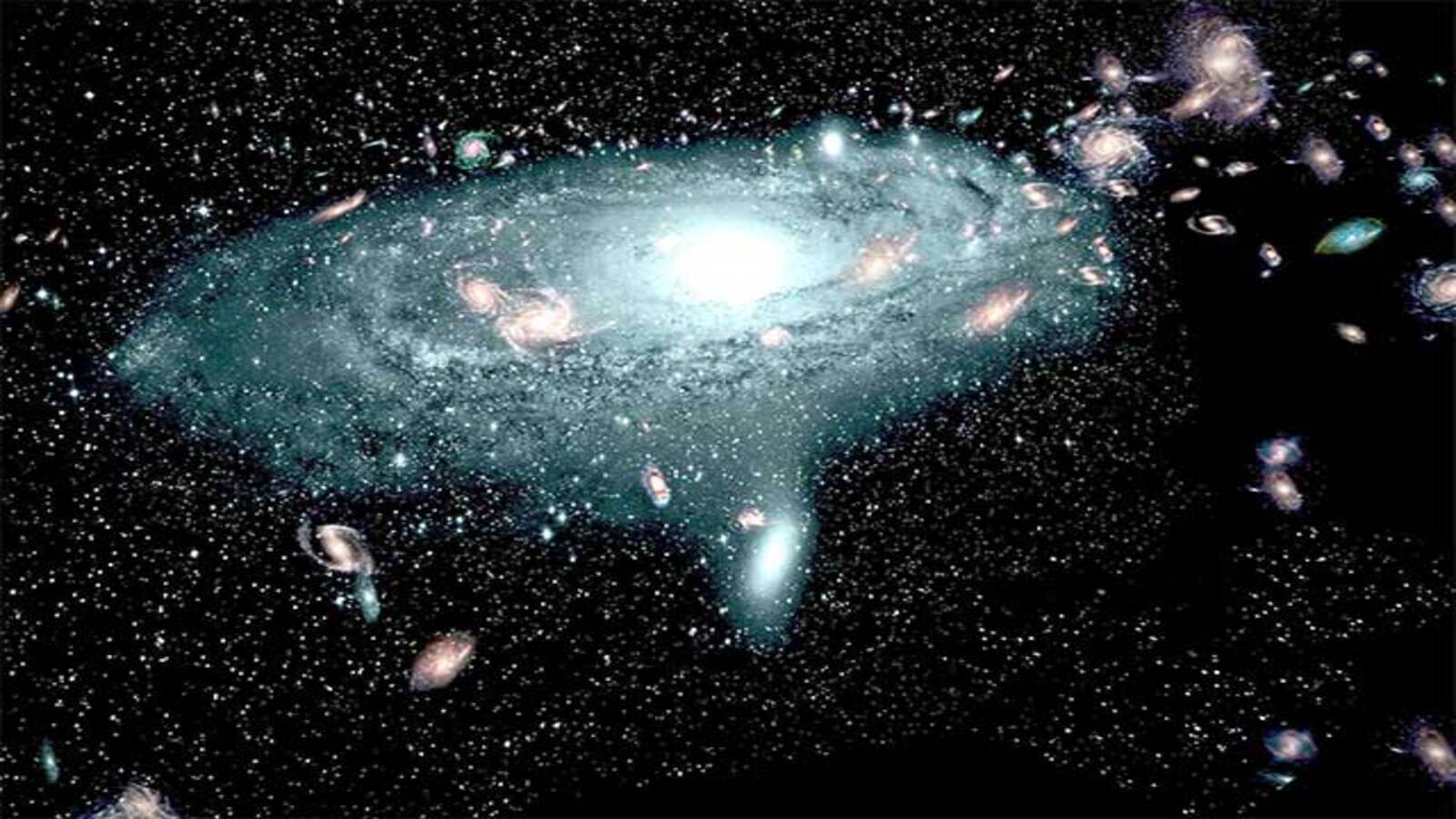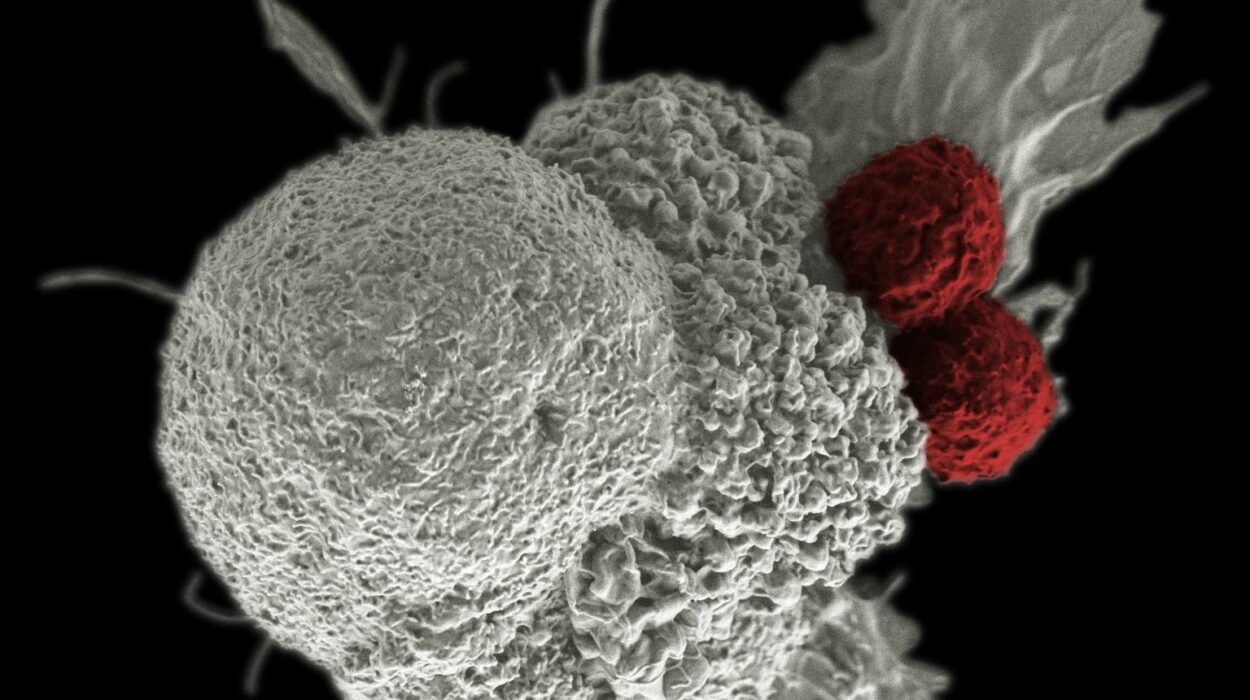When we gaze into the night sky, the universe appears filled with light—stars, galaxies, nebulae, and clusters glowing across cosmic distances. Yet, beyond this apparent brilliance lies an overwhelming emptiness. The universe, in truth, is not dominated by luminous matter but by vast, dark regions where almost nothing exists. These immense expanses are known as cosmic voids, the silent and nearly empty spaces that form the scaffolding of the cosmos. They are the largest structures in the universe, yet paradoxically defined by their lack of matter. Understanding these voids is crucial for grasping how the universe formed, evolved, and continues to expand.
The Large-Scale Structure of the Universe
The universe is not evenly distributed. On the largest scales, matter is organized in a vast cosmic web—a network of filaments, clusters, and voids stretching across billions of light-years. Galaxies and dark matter form thread-like filaments that intersect at dense nodes called galaxy clusters. Between these threads lie enormous bubbles of emptiness—the cosmic voids.
Astronomers first recognized this structure in the late 20th century, when galaxy redshift surveys began mapping the three-dimensional positions of galaxies. These maps revealed that galaxies are not scattered randomly but arranged in walls and filaments surrounding large, nearly spherical cavities. This cellular pattern resembles the froth of soap bubbles or the structure of foam, with voids as the empty spaces between the filaments of cosmic matter.
Cosmic voids vary in size, but the largest known ones can span hundreds of millions of light-years. While they appear empty, they are not entirely devoid of matter. They contain a sparse sprinkling of galaxies and an extremely diffuse gas, as well as dark matter that is distributed at much lower densities than in the surrounding filaments.
The discovery of these immense voids revolutionized our understanding of the cosmos, showing that the universe’s matter is arranged in a hierarchical and dynamic pattern shaped by gravity, dark matter, and cosmic expansion.
The Discovery of Cosmic Voids
The concept of cosmic voids emerged in the 1970s and 1980s, when astronomers began conducting extensive redshift surveys to map galaxy distributions in three dimensions. Before that, the universe was often imagined as a more uniform sea of galaxies.
In 1978, Stephen Gregory and Laird Thompson discovered the first significant void while mapping galaxies in the Boötes constellation. Known today as the Boötes Void, this region stunned astronomers—it stretches over 330 million light-years across and contains remarkably few galaxies. Its existence suggested that the universe was far more structured than previously thought.
As more surveys were conducted, including the CfA Redshift Survey and later the Sloan Digital Sky Survey (SDSS), astronomers found that the Boötes Void was not an anomaly. Similar large empty regions appeared throughout the cosmic map, confirming that voids are a fundamental component of the universe’s architecture.
These discoveries marked a turning point in cosmology, revealing that emptiness itself could be an essential clue to the workings of the cosmos. The large-scale pattern of voids, filaments, and clusters became known as the cosmic web, a term now central to cosmological theory and simulation.
The Nature and Composition of Voids
Though they are often described as empty, cosmic voids are not true vacuums. They contain a thin trace of matter, mostly in the form of diffuse hydrogen gas, scattered dark matter, and a few isolated galaxies. However, their density is typically less than one-tenth of the average cosmic density.
In physical terms, a typical void might contain only one galaxy per several million cubic light-years, compared to hundreds or thousands in similarly sized regions of a galaxy cluster. The gas in voids is extremely tenuous—so rarefied that it would be almost impossible to detect directly without specialized instruments.
Dark matter, which makes up most of the universe’s mass, is also present in voids but at very low density. Simulations suggest that dark matter in voids has not collapsed into halos as efficiently as in denser regions. This means fewer gravitational wells exist to seed galaxy formation, explaining the scarcity of galaxies within these regions.
Voids are not entirely static. They expand faster than the rest of the universe because they are underdense. The lack of mass means there is less gravity to counteract cosmic expansion. As a result, voids grow over time, pushing matter outward into surrounding walls and filaments. This dynamic process contributes to the overall shaping of the cosmic web.
The Formation of Voids in Cosmic Evolution
To understand how cosmic voids form, we must return to the early universe. After the Big Bang, the universe was nearly uniform but contained tiny fluctuations in density—quantum ripples stretched to cosmic scales by inflation. Over billions of years, gravity amplified these fluctuations, pulling matter together in some regions while leaving others increasingly empty.
Where density was slightly higher, matter began collapsing under gravity to form galaxies, clusters, and filaments. Meanwhile, regions that started with slightly lower density became emptier as matter flowed away toward denser areas. These underdense regions evolved into cosmic voids.
In cosmological simulations, voids emerge naturally from this process. They start small in the early universe and merge over time into larger structures, much like bubbles in boiling water. As voids expand, they push galaxies and dark matter toward the boundaries, creating the filamentary structures that define the cosmic web.
The interplay between gravity, dark matter, and cosmic expansion governs this process. Gravity draws matter together, but in voids, where density is low, cosmic expansion dominates, stretching space faster than matter can accumulate. Over time, this leads to increasingly large and empty regions.
The Role of Dark Matter and Dark Energy in Voids
Dark matter and dark energy—two mysterious components that dominate the universe—play critical roles in shaping cosmic voids. Dark matter provides the gravitational scaffolding upon which visible structures form, while dark energy drives the accelerated expansion of the universe.
In regions rich in dark matter, gravity pulls gas and galaxies together, forming clusters and filaments. In contrast, voids correspond to areas with low dark matter density, where gravity is too weak to halt the stretching of space. As the universe expands, these regions expand faster, becoming emptier over time.
Dark energy accelerates this process. Since it acts as a repulsive force on cosmic scales, voids effectively feel its influence more strongly than dense regions. In dense clusters, gravity partially counters expansion, but in voids, the absence of mass allows dark energy to dominate. This accelerates the evacuation of matter, making voids valuable laboratories for studying dark energy’s effect on cosmic structure.
Because voids are sensitive to the balance between gravity and cosmic acceleration, astronomers use them as probes to test cosmological models. The growth rate and shape of voids can reveal information about dark energy’s nature and the geometry of the universe.
Galaxies in the Void
Although voids are mostly empty, they do contain a small population of galaxies. These “void galaxies” are fascinating because they differ in subtle ways from their counterparts in denser environments. They tend to be smaller, more isolated, and less massive, with higher gas fractions and ongoing star formation.
The low-density environment of voids affects how galaxies evolve. Without the frequent interactions and mergers common in clusters, void galaxies evolve more slowly and preserve more of their primordial characteristics. Many are irregular or spiral galaxies, with less gravitational disturbance to disrupt their structure.
Studies of void galaxies provide a window into how environment influences cosmic evolution. In dense regions, galaxies experience ram-pressure stripping, tidal interactions, and mergers that can quench star formation and alter morphology. In contrast, void galaxies evolve in relative solitude, retaining gas for longer periods and forming stars at a steadier rate.
The presence of these galaxies also helps astronomers trace the boundaries and internal structures of voids. By mapping where galaxies appear and disappear, researchers can infer the shape and extent of the surrounding emptiness.
Mapping and Measuring Cosmic Voids
Mapping cosmic voids requires vast surveys of galaxies across immense volumes of space. The most influential surveys—such as the Sloan Digital Sky Survey (SDSS), the 2dF Galaxy Redshift Survey, and the Dark Energy Survey—have provided the data needed to chart the universe’s large-scale structure.
Astronomers identify voids by locating regions where galaxy density drops below a certain threshold. Sophisticated algorithms then reconstruct the three-dimensional topology of the cosmic web. These maps reveal a universe filled with interconnected cavities and filaments, resembling a cosmic sponge or honeycomb.
Voids are typically classified by size and morphology. Small “mini-voids” span a few tens of millions of light-years, while giant “supervoids” can exceed 300 million light-years. Shapes vary from spherical to highly irregular, depending on how neighboring structures interact.
Measurements of void statistics—such as their size distribution, expansion rate, and clustering—provide powerful cosmological tools. Comparing observed void properties to predictions from simulations helps refine our understanding of dark matter, dark energy, and the universe’s initial conditions.
The Boötes Void and Other Giants
Among all cosmic voids, the Boötes Void stands out as one of the most remarkable. Discovered in 1981, it lies roughly 700 million light-years away and stretches about 330 million light-years across. Despite its immense size, only a few dozen galaxies have been detected within it—an extraordinarily small number for such a vast region.
The Boötes Void is so large that if the Milky Way were at its center, we might not have discovered other galaxies until modern times. Its existence highlights the scale of cosmic emptiness that pervades the universe.
Other notable voids include the Eridanus Supervoid, which may be associated with the Cold Spot observed in the cosmic microwave background, and the Local Void, a nearby underdense region influencing the motion of the Milky Way and neighboring galaxies. These structures demonstrate that voids are not isolated anomalies but integral features of cosmic topology.
The Dynamics of Void Expansion
Voids are not static holes in space—they are dynamic, evolving entities. As the universe expands, voids expand faster than the average cosmic rate due to their low gravitational potential. Matter at their edges flows outward, enhancing the contrast between the empty interior and dense surroundings.
This expansion causes neighboring voids to merge over time, forming larger structures. Simulations show that voids grow hierarchically, much like galaxies and clusters do, but in reverse. Instead of collapsing under gravity, they expand as surrounding matter drains away.
The dynamics of this expansion can be described by gravitational instability theory. In denser regions, gravity overcomes expansion, leading to collapse and structure formation. In underdense regions, expansion dominates, stretching the void further. This divergence contributes to the intricate balance of the cosmic web, where matter continuously flows from voids into filaments.
Voids also exhibit a subtle influence on the motion of galaxies. The outward expansion creates peculiar velocities, where galaxies near void edges experience gravitational pushes away from the void centers. Observing these motions allows astronomers to map void dynamics and test gravitational models.
Cosmic Microwave Background and the Role of Voids
Cosmic voids leave subtle imprints on the cosmic microwave background (CMB)—the afterglow of the Big Bang. When CMB photons pass through a void, they experience a small gravitational effect known as the Integrated Sachs–Wolfe effect. Because the gravitational potential in a void changes over time as it expands, photons lose slightly more energy escaping than they gained entering. This creates minute temperature variations in the CMB.
These imprints are extremely faint, but when averaged across many voids, they can provide evidence of cosmic acceleration and dark energy. Observations of void-induced CMB distortions complement other cosmological probes, such as supernova measurements and galaxy clustering, offering an independent method to study the universe’s large-scale properties.
The Eridanus Supervoid, for example, has been studied as a possible contributor to the CMB Cold Spot—a region of unusually low temperature in the microwave background. While the connection remains debated, such investigations illustrate how cosmic voids influence our observation of the universe’s oldest light.
Voids as Cosmological Laboratories
Cosmic voids are not just empty spaces—they are natural laboratories for testing fundamental physics. Because they are relatively free from nonlinear gravitational interactions, they preserve cleaner imprints of cosmic expansion and initial density fluctuations.
Voids amplify the effects of dark energy, modified gravity, and other exotic physics that may be difficult to detect in dense environments. For example, theories that propose deviations from Einstein’s general relativity predict different rates of void expansion. Measuring these differences could reveal whether gravity behaves differently on cosmic scales.
Additionally, the internal structure of voids provides insights into dark matter behavior. Some models predict that dark matter may clump differently in underdense regions, affecting galaxy formation and gas distribution. Observations of void galaxies, gas dynamics, and weak gravitational lensing offer data to test these ideas.
By studying the simplest, emptiest regions of the cosmos, astronomers hope to uncover answers to the most complex questions about its composition and fate.
The Local Void and Its Influence
Even our cosmic neighborhood is shaped by voids. The Local Void is a vast underdense region adjacent to the Local Group of galaxies, which includes the Milky Way and Andromeda. Measuring roughly 150 million light-years across, it influences the motion of nearby galaxies by exerting a gravitational “pull” outward.
Galaxies near the void’s boundary experience accelerated motion away from its center, contributing to peculiar velocity patterns in the local universe. The study of the Local Void helps astronomers understand how cosmic flows operate and how the universe’s expansion is influenced by nearby structures.
Interestingly, the Local Void also provides a sense of cosmic perspective. Though our region of space feels crowded with stars and galaxies, on a larger scale, we exist on the thin edge of a vast cosmic bubble. The emptiness surrounding us is part of the same web that spans the entire observable universe.
The Future of Cosmic Voids
As the universe continues to expand, cosmic voids will grow even larger. Over billions of years, matter will increasingly flow into dense regions while voids dominate the overall volume of the universe. Eventually, distant galaxies and filaments will drift beyond observable reach, leaving vast expanses of near-total darkness.
In this far future, voids may merge into one another, erasing much of the structure we see today. The cosmic web will thin, and the universe will become increasingly homogeneous as dark energy drives eternal expansion. Cosmic voids, therefore, represent both the universe’s past and its destiny—remnants of its initial unevenness and symbols of its eventual isolation.
Current and upcoming surveys, such as the Vera Rubin Observatory’s Legacy Survey of Space and Time (LSST) and the Euclid mission, will map voids with unprecedented precision. These efforts will not only refine our understanding of the cosmic web but may also shed light on the fundamental physics driving cosmic acceleration.
Philosophical Implications of Cosmic Emptiness
Beyond their scientific significance, cosmic voids invite profound philosophical reflection. They remind us that the universe is overwhelmingly empty—that matter, life, and light are rare exceptions within an ocean of darkness. Yet it is precisely this emptiness that makes structure possible. Without voids, there would be no contrast, no gravitational gradients to shape galaxies or sustain cosmic evolution.
Voids illustrate a deep symmetry in nature: creation and absence, fullness and emptiness, coexisting as complementary aspects of cosmic order. The universe’s beauty lies not only in its luminous galaxies but also in the silent expanses that frame them.
In a sense, cosmic voids mirror the human experience of seeking meaning within vast unknowns. They symbolize the interplay between presence and absence, reminding us that even emptiness holds profound significance in the cosmic story.
Conclusion
Cosmic voids are the universe’s great paradox—regions defined by their emptiness, yet essential to its structure and evolution. They are the silent architects of the cosmic web, sculpting galaxies and filaments through their expansive influence. Born from the tiny density ripples of the early universe, they have grown into vast domains of near nothingness, stretching across hundreds of millions of light-years.
Though seemingly void, these regions reveal much about the universe’s hidden forces—dark matter, dark energy, and the laws of gravity that govern all cosmic motion. They offer a pristine stage for testing cosmological theories, free from the complexity of dense environments.
To understand cosmic voids is to grasp the universe’s balance between presence and absence, structure and space, energy and stillness. The stars, galaxies, and nebulae that dazzle our eyes are but the bright filaments of a far greater tapestry—one woven through the silent fabric of emptiness.
In the grand cosmic scale, it is the voids that define the shape of existence, sculpting the spaces where galaxies gather and where the universe itself breathes into infinity.






